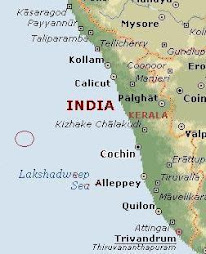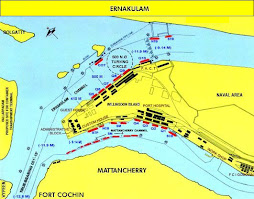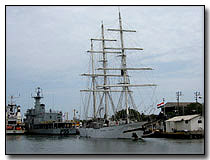Efforts to evolve
the Rules relating to Prevention and Control of Pollution and protection of Inland
Water is a welcome step.
Since the State of Kerala has a wide network of Inland waters the said
Rules are of enormous relevance to the state.
The Kerala Backwaters are a network of
interconnected canals, rivers, lakes and inlets, a labyrinthine system formed
by more than 900 km of waterways, and sometimes compared to the American Bayou.
In the midst of this landscape there are a number of towns and cities, which
serve as the starting and end points of backwater cruises. National Waterway 3
from Kollam to Kottapuram, covers a distance of 205 km and runs almost
parallel to the coast line of southern Kerala facilitating both cargo movement
and backwater tourism. The important rivers from north to south are;
Valapattanam river (110 km.), Chaliar (69 km.), Kadalundipuzha
(130 km.), Bharathapuzha (209 km.), Chalakudy river (130 km.),
Periyar (244 km), Pamba (176 km), Achancoil (128 km.) and
Kalladayar (121 km.). Other than these, there are 35 more small rivers and
rivulets flowing down from the Ghats. (as per info available on line)
Most of these rivers are navigable up to
the midland region, in country crafts. These waters are ecologically fragile
and hence the importance of the above Rules need not be overemphasized.
The Rules are enacted as empowered under the Inland Vessel Act, 1917.
The Draft Rules envisages measures to prevent
and control pollution and to protect inland water.
On a study of the draft of the Inland Vessels (Prevention and Control of Pollution and protection
of Inland Water) Rules, 2016 the following aspects require consideration:
1.
The draft Rules do not take note of
the main vessel board pollution sources.
2.
The Rules do not mention the standards
of safety to be maintained on board vessels.
3.
No provision is seen incorporated
for Control of discharge of oil or oily
mixtures from
vessel’s machinery.
4.
Most pollution of the inland waters
arise out of operational incidents which in turn arise out of failure to follow
procedures.
5.
There has to be a fixation of
liability on the Vessel owners/ operators and heavy fines and/or imprisonment
for those involved
6.
Mandatory insurance cover for pollution
incidents should be considered.
7.
Significant costs should be levied on Vessel
owners/ operators in case of pollution acts.
8.
Time bound survey of the vessels and
their classification ought to be insisted on for the purpose of ensuring
prevention of pollution.
9.
Standard discharge connection ought to
be specified in order to enable pipes of reception facilities to be connected
with the Vessel's discharge pipeline for residues from machinery bilges and
from sludge tanks. Both lines shall be fitted with a standard discharge
connection as stipulated.
10.
Rules are silent about Ballast water
management.
11.
No
vessel shall be permitted to discharge into the inland waters ballast water without
filtering the same.
12.
Ballast water which
is not a clean ballast shall be discharged only in to reception facilities at
Inland ports.
13.
Ballast water filtering equipment must
be made available at the Inland port.
14.
Kitchen and Human waste from the
inland vessels should not be discharged directly into the inland waters.
15.
Every vessel above specified capacity
shall carry on board a shipboard oil pollution
emergency plan approved by the concerned authority.
16.
There
ought to be a prohibition of carrying ballast water in any oil fuel tank.
17.
Protection
against oil pollution in the event of collision or stranding of vessels ought
to be provided.
18.
There has to
be specific mention of the safety requirements for the cargo area of the vessel
which carry hazardous chemicals and obnoxious substances.
19.
Construction
of the said vessels which carry hazardous chemicals and obnoxious substances
and the equipment’s require special mention.
20.
The
capacity for the reception facilities at Inland Ports ought to be specified.
21.
Reception
facilities within special areas like thickly populated areas would be specially
mentioned and elaborated upon.
Attention to the above aspects appears to be necessary to make the Rules complete and to equip it to meet its objective.
Recent incident of leakage of Liquefied Ammonia Gas (LAG) from a barge transporting LAG to FACT at Champakkara requiring mass evacuation from the locality and sending panic across the city of Kochi has to be an eye opener. Insufficiency of legal norms ought not be a reason for repetition of such incidents.
***



























